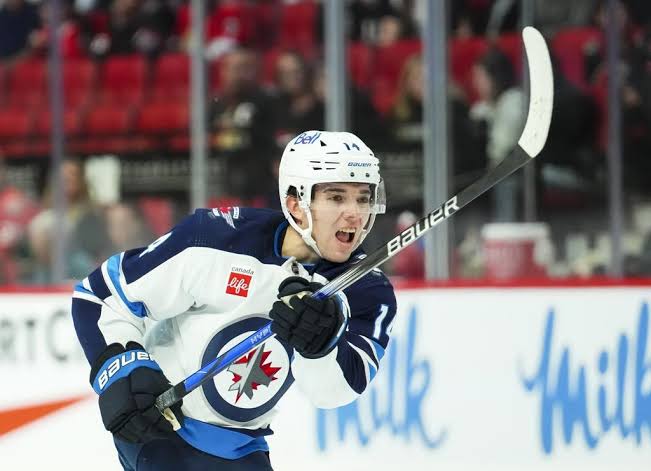The hockey world has been shaken by a bombshell revelation: the Winnipeg Jets’ powerhouse, Adam Lowry, has received a monumental transfer bid from an unexpected suitor, New York Giants’ manager. In a move that has left sports analysts and fans scratching their heads, the Giants—a team known for their dominance in football—have entered the fray with a $456.7 million bid for the star center, Adam Lowry. This development comes as a surprise, igniting speculation about the motivations and potential ramifications of such a cross-sport move.
Lowry, known for his physical prowess and exceptional leadership skills, has become an indispensable figure for the Jets. His ability to command the ice with agility and grit has earned him a revered spot among NHL elites. The 30-year-old forward has had a standout season, showcasing a blend of defensive tenacity and offensive flair that has made him one of the Jets’ most reliable players. It’s no wonder that any team, even one outside the NHL, would be interested in acquiring such talent.
However, the entrance of the New York Giants into the negotiations has raised more questions than answers. Could this be an unprecedented pivot by the Giants toward building a multi-sport brand? While such cross-sport investments are rare, they are not entirely unheard of. In recent years, franchises have explored ways to diversify their rosters and marketing strategies by involving players from other sports, tapping into wider fan bases and unique revenue streams.
Critics have been quick to voice their skepticism, with some calling this move nothing more than an elaborate publicity stunt aimed at drawing attention to the Giants’ brand. “It’s difficult to imagine how Adam Lowry would fit into the structure of an NFL team,” remarked sports analyst Mike Richter. “This raises a lot of questions about the Giants’ long-term goals and whether they’re attempting to break the mold of traditional team strategies.”
Fans, meanwhile, are buzzing with excitement and bewilderment. Social media platforms are alight with theories ranging from the plausible to the outlandish, with some fans wondering if this move signals a future where multi-sport athletes become the norm. Others have pointed out that such a large sum would shatter current transfer records, setting a new financial precedent not only for the NHL but potentially influencing the entire landscape of professional sports contracts.
The Winnipeg Jets’ management, so far, has declined to comment publicly on the bid, fueling further intrigue. Speculation continues to swirl about how the team and Lowry himself might respond. Should Lowry choose to explore this opportunity, it would mark a significant shift in his career and set a new precedent in the world of professional sports. Would he embrace the challenge of redefining himself outside the rink, or would he remain loyal to his NHL roots and continue to solidify his legacy on the ice?
This unprecedented move could very well ignite a new chapter in professional sports, where athletes and teams rethink the boundaries of their contracts, careers, and branding strategies. Whether this bid results in a successful transfer or simply becomes a footnote in sports history, it’s already succeeded in capturing the attention of millions and sparking a conversation that may reshape the future of sports recruitment and marketing.
